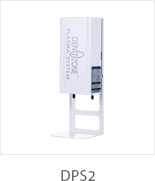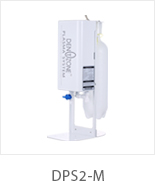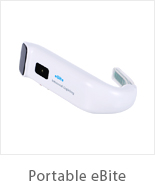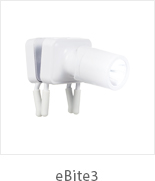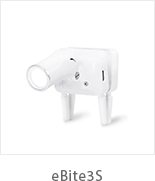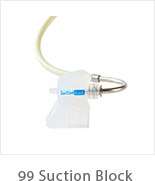| Title | Analysis of Eight Process Technologies of Micro-pitch LED Screen |
|
With the needs of the economic market and the rapid progress and maturity of micro-pitch LED display technology, the dot pitch of micro-pitch LED displays is getting smaller and smaller. Now the market has launched P1.4, P1.2, P0.9 and other micro-pitch LEDs. Display, and widely used in video conferencing, command and control, monitoring center, radio and television media and other fields. In the past few years, the characteristics of high-definition display, high refresh rate, seamless splicing, good heat dissipation system, convenient and flexible disassembly and assembly, energy saving and environmental protection of micro-pitch LED display screens have been well known by the majority of industry users, but further, say As for the specific process technology of micro-pitch LED screens, the general public is seldom aware of it, "only knowing one but not the other". The lack of professional knowledge directly leads to the emergence of blind spots in purchasing. From a technical perspective, the smaller the pixel pitch of a micro-pitch display, the higher the requirements for the mounting, assembly, splicing process and structure of LEDs. This article will analyze various process technologies of micro-pitch LED display, so that users can have a more thorough understanding of micro-pitch LED products. 1. Packaging technology: Display screens with densities above P2 generally use 1515, 2020, and 3528 lamps, and the LED pin shape adopts J or L packaging. If the pin is welded sideways, the welding area will reflect light, and the ink color effect will be poor. It is necessary to add a mask to improve the contrast. If the density is further increased, the L or J package cannot meet the application requirements, and the QFN package must be used. The feature of this process is that there are no lateral welding pins, and there is no reflection in the welding area, which makes the color rendering effect very good. In addition, the all-black integrated design is used for compression molding, and the contrast ratio of the screen is increased by 50%, and the image quality of the display application is better than that of the previous display. 2. Printed circuit board process: With the development trend of micro-pitch display screens, 4-layer and 6-layer boards are adopted, printed circuit boards will adopt micro-via and buried hole designs, printed circuit graphics wires are thin, micro-holes are narrowed, and the processing uses Mechanical drilling technology can no longer meet the requirements, and the rapidly developing laser drilling technology will meet the requirements of micro-hole processing. 3. Printing technology: Too much or too little amount of solder paste and printing offset directly affect the soldering quality of the micro-pitch outdoor display wall tube. The correct PCB pad design needs to be implemented in the design after communicating with the manufacturer. Whether the opening size of the stencil and the printing parameters are correct or not is directly related to the amount of solder paste printed. Generally, 2020RGB devices use an electropolished laser steel mesh with a thickness of 0.1-0.12mm, and devices below 1010RGB are recommended to use a steel mesh with a thickness of 1.0-0.8. Thickness, opening size increases proportionally to tin amount. The quality of micro-pitch LED soldering is closely related to solder paste printing, and the use of printing machines with functions such as thickness detection and SPC analysis will play an important role in reliability. 4. Mounting technology: The slight deviation of the position of each RGB device of the micro-pitch display will lead to uneven display of the screen, which will inevitably require higher precision of the placement equipment. 5. Welding process: Excessive temperature rise in reflow soldering will lead to uneven wetting, which will inevitably lead to device offset during the process of wetting imbalance. Excessive wind circulation can also cause device displacement. Try to choose a reflow soldering machine with a temperature zone above 12, chain speed, temperature rise, circulating wind, etc. as strict control items, that is, to meet the welding reliability requirements, and to reduce or avoid device displacement, and try to control it within the required range. Generally, the range of 2% of the pixel pitch is used as the control value. 6. Box assembly: The box body is spliced by different modules. The flatness of the box body and the gap between the modules directly affect the overall effect of the box body after assembly. Aluminum plate processing boxes and cast aluminum boxes are widely used box types at present, and the flatness can reach within 10 wires. The splicing gap between modules is evaluated by the distance between the nearest pixels of the two modules. If the two pixels are too close to each other, they will be bright Lines, two pixels too far will result in dark lines. Before assembling, it is necessary to measure and calculate the seam of the module, and then select a metal sheet of relative thickness as a jig and insert it in advance for assembly. 7. Screen assembly: The assembled cabinet needs to be assembled into a screen before it can display refined pictures and videos. However, the size tolerance of the box itself and the cumulative assembly tolerance cannot be ignored for the assembly effect of the micro-pitch display. If the pixel pitch of the nearest device between the cabinets is too large or too small, dark lines and bright lines will be displayed. The problem of dark lines and bright lines is a difficult problem that cannot be ignored in micro-pitch display screens and needs to be solved urgently. Some companies make adjustments by pasting 3m adhesive tape and finely adjusting nuts on the cabinet to achieve the best results. 8. System card selection: The bright and dark lines and uniformity and color difference of the micro-pitch display are the accumulated criticisms of LED device differences, IC current differences, circuit design layout differences, and assembly differences. Some system card companies can reduce bright and dark lines and brightness and chromaticity differences through software correction all. The high-performance system card is selected to correct the brightness and chromaticity of the micro-pitch LED display, so that the display can achieve better brightness and chromaticity uniformity, and a better display effect has been achieved. |
|
